Howdy guys! There are no updates this week, so we'll start off with my non-fiction article for this week.
Two weeks prior, we learned about the characters that make up
the first season of the ITV show known as Primeval. But what's a series
about extinct animals, without the creatures themselves? So this week we're
going to wrap up my three-part review of the first season of Primeval
with some information on each of the creatures that make an appearance. One
thing I like about Primeval, is that many of the creatures they portray
in the series aren't well known in popular culture (I mean, who's ever heard of
a gorgonopsid or Anurognathus). As fanciful as they may seem, the
creatures from the past are all found in the fossil record and really did exist
on our planet (most of the ones in season 1 were found in pre-Flood sediments).
 |
| Here's a beautiful photo of Nick Cutter in the Permian habitat; a herd of elephant-sized Scutosaurus (bottom) and a pair of Coelurosauravus (top) are also visible. |
Gorgonopsid
“It's a compact killing machine, and it's incredibly powerful; Stephen, if it is still out there, then you have to find it. Fast!”
- — Connor Temple to Stephen Hart on the Gorgonopsid.
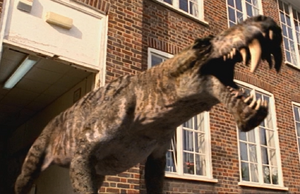
The gorgonopsid (“Gorgon face”) is the first animal to make
an appearance in Primeval, and it wreaks havoc in both Episode 1.1 and
Episode 1.6. This ferocious predator (which is one of my favorite extinct
animals of all time) is from the Permian habitat and travels through and
anomaly into the present. Nick Cutter's team first becomes aware of this beast
when it is spotted by an eyewitness and they find out that this monster lurks
in the Forest of Dean, where the anomaly opened. Throughout Episode 1.1, Nick's
newly formed team must bring down the gorgonopsid before it kills anyone. It
doesn't make another appearance until Episode 1.6 when Nick, Captain Ryan and
his soldiers and Helen Cutter try to return the baby Future Predators to the
future anomaly which is in turn in the Permian anomaly. (SPOILER ALERT!!!) This killer reptile has the endurance of a leopard; once it smells blood, it seldom gives up until it has caught its prey.
Unfortunately, the mother Future Predator follows them, kills the soldiers and
injures Captain Ryan to protect her babies. But as soon as she let's them free,
a gorgonopsid enters the scene and an awesome fight takes place between one of
the most ferocious killers ever to live on the planet, and another ferocious
killer from the future. The gorgonopsid however manages to kill the Future
Predator and eats three of the five babies (END OF SPOILER ALERT!!!).
The gorgonopsid from the show is often identified by fans as a Gorgonops, a
large predator from South Africa. But the problem with this is that the
gorgonopsid in the series is depicted as living with Scutosaurus, which
lives in Russia! The correct identification for the gorgonopsid in Primeval
is Inostrancevia, the largest gorgonopsid ever to walk the earth as 12
feet in length – the size of a rhinoceros. Inostrancevia and other
gorgonopsids were unique among most predators because they had a pair of
saber-teeth in their jaws (these are weapons some that some famous feline Ice
Age predators were known to have used). In Inostrancevia these
saber-teeth grew four inches long. Inostrancevia was a fast, terrible
and no doubt one of the most fearsome predators ever to exist on the planet –
ranking with other predators like T. rex and the great white shark.
Rex (Coelurosauravus)
"Rex! I swear, when I catch you, you're going to be the first animal to go extinct twice!"
- Connor to Rex, who's playing hard-to-get.
One of the favorite stars of the series is no doubt the
flying lizard Coelurosauravus named Rex (another favorite of mine). Coelurosauravus
is a lizard that used to live in the
pre-Flood Permian habitat. Rex exited the Forest of Dean anomaly and was
discovered by a boy named Ben. Ben's family called a local zoo to take the
exotic animal and sent Abby Maitland over to receive it, who incorrectly
identified it as a new species of lizard (she wasn't an expert on extinct
animals at the time). When Nick tried to return Rex through the anomaly, the
flying lizard returned and ever since, Abby's been keeping him as a pet in her
apartment and he's been a mascot for the Primeval series (sort like what
Snoopy is to the Peanuts series). In the show, Rex is unusually active
and intelligent for a cold-blooded reptile and has the ability to soar through
the air using the extensions of its ribs that form wing-like structures on each
side of its body. In Episode 1.5, Connor accidentally leaves a window open at
Rex escapes, resulting in Abby's frustration with Connor as they attempt to
track him down. This Coelurosauravus bonds very well with humans and,
while a few other Coelurosauravus have made their appearance in Episode
1.1, Rex is the one we see most and an instant favorite of Primeval
fans, in both America and Europe.
Scutosaurus
“It's
a reptile. Five or six tons at least. Large supratemporal bosses, huge
osteoderms on its back... it must be some kind of anapsid.”
— Nick Cutter
In terms of actual body mass, Scutosaurus is the
largest land animal to appear in season 1 of Primeval. It is first seen
when it was discovered by Nick Cutter, Stephen Hart, Claudia Brown, Connor
Temple and Abby Maitland in the Forest of Dean. Weighing up to five tons, Scutosaurus
is an elephant-sized herbivore from the Permian habitat. Scutosaurus,
which aptly means “shield reptile”, got its name from its tough, heavily
armored body. It was first seen in Episode 1.1 of Primeval, but they make
a cameo in Episode 1.6. These creatures appear to live in herds and are not
dinosaurs, but pareiasaurs. The Scutosaurus from the show is larger than
its real-life counterpart, which weighs closer to one ton; however, even at
this smaller estimate, it was the largest pareiasaur that ever lived. We have
no fossils from these beasts dating to after Noah's Flood and no dragon legend
records of creatures resembling this animal, so Scutosaurus and its kin
probably went extinct shortly after Flood of Noah's time.
Giant Carboniferous Spiders
Stephen: ". . . they're actually more scorpion than spider."
Abby: "I feel better already."
- Stephen trying to encourage the arachnophobic Abby.
Abby, who's has a good-sized case of arachnophobia, isn't too
fond of the group of Giant Carboniferous Spiders she, Stephen and Nick meet in
Episode 1.2 while exploring the subway tunnels. In the series, these spiders
have come to the present via an anomaly that leads to the Carboniferous habitat
of the pre-Flood world (hence their nickname). These spiders appear to be a
meter (three feet) wide and nest in groups. Despite what you might expect from
a giant spider, the Giant Carboniferous Spiders are quite harmless and
terrified of light, which tells them another, more dangerous creature is
stalking the subway tunnels. Also, even though they're spiders, they lack
venom, don't spin webs and have a pair of enormous pincers (not unlike the
modern camel spider). The spiders in Primeval are based off of
fragmentary fossils of large Carboniferous spiders; scientists once thought
that the fossils of an arthropod called Megarachne was a giant
meter-wide spider like the one in the series, but later found it to be a
species of extinct sea scorpion.
Arthropleura
Claudia: "I thought you said not dangerous!"
Connor: "I was only speculating!"
Connor and Claudia on how dangerous Arthopleura was.
Arthropleura is a 20-foot long relative of the modern
millipede. Like its relatives, it has lots and lots and lots (and lots) of
legs. Arthropleura appears in Episode 1.2 after Nick and the team
discover that the Carboniferous Giant Spiders weren't responsible for the
recent death of an exterminator. As Stephen soon learns the hard way, the
easily-provoked Arthropleura has a pair of nasty pincers at the front
that are used to inject lethal toxins in a victim. The only way to cure someone
who has been bitten by an Arthropleura is by using the creature's venom
to make anti-venom. Strangely though, Arthropleura doesn't eat its
victims, so perhaps its attacks are more territorial. The real Arthropleura
the one in Primeval is based on it half as large – ten feet long – and,
fortunately for any pre-Flood humans exploring the Carboniferous habitat, it
ate plants (we know this thanks to dung droppings and by looking at the stomach
contents of Arthropleura).
Mosasaur
“Mosasaur,
eh? Cretaceous sea marine predator, ranging from two to twenty meters
in length and two tonnes in weight . . .!”
— Tom
The mosasaur is a large sea-going lizard that used to call
the Cretaceous seas of the pre-Flood world home. The mosasaur exits an anomaly
with the ability to change locations and, as expected, it soon uses its large
size and awesome mouth to make short work of its victims in Episode 1.3. The
mosasaur in Primeval reaches 65 feet in length and will gladly pursue
prey in both fresh and salt water. It's one of the most ferocious predators
that's ever existed and is even tenacious enough to launch itself out of the
water to attack prey at the water's edge like a killer whale. However, they
can't digest every part of their prey and will regurgitate the bits that don't
agree with their stomachs. The mosasaur species of Primeval is probably Tylosaurus,
Mosasaurus, or Hainosaurus, each of which were the “T. rex of the
Sea”. Fossil finds tell us that mosasaurs were even so ferocious, they'd
literally eat anything that moved – even other mosasaurs! The mosasaur of Primeval
is mainly solitary – the only time when aggression isn't considered by
mosasaurs that come into contact with other mosasaurs is when there's the
possibility of mating. Better stay out of the water when mosasaurs are around!
Hesperornis
“Hesperornis; scary up close but cumbersome, and very stupid.”
— Helen Cutter
Imagine a penguin that stands six feet tall when standing at
full height, two small wings on each side, webbed feet, a long neck and a
lengthy beak filled with needle-sharp teeth and you've got a Hesperornis.
Like penguins, Episode 1.3 reveals that they live in flocks and spend much time
in sea, hunting fish. They also come to land and rest on the seashore like
penguins as well. But don't let their penguin-like appearance fool you – these
creatures are much more ferocious, as one (SPOILER ALERT!!!) kills a
plumber that tries to fix a supposed leak that seems to be flooding a woman's
basement (though the water is really from an anomaly). (END OF SPOILER
ALERT!!!) Helen Cutter though knows how to scare them off. But Hesperornis
themselves are prey for larger creatures, such as the terrible mosasaurs.
Unlike their Primeval counterparts, real Hesperornis are covered
in feathers, not scaly skin (but real Hesperornis do have a toothy
beak), and can't use their legs to hold their bodies up because they're too far
spread out. Instead, the Hesperornis had to slide itself along when it
was on land, making it cumbersome. In the water however, it transformed into a
graceful and, in Primeval, terrifying swimmer.
Dodo Bird
“The Dodo was renowned for being slow, stupid and harmless.”
— Tom
Who doesn't love the dodo bird? These creatures are naturally
placid, friendly and curious animals – not many creatures in Primeval
can qualify for that! Dodo birds went extinct relatively recently, only a
couple hundred years ago, and have been popular ever since their discovery on
the island of Mauritius in the 18th century. Because the Dodo didn't
flee upon meeting the first settlers, the settlers incorrectly assumed them to
be dimwitted, but this isn't true. Instead, since the Dodo's didn't have any
natural predators on Mauritius, they didn't think the humans would do them any
harm; so instead of dumb, they were a little too trusting, as Abby puts it when
Nick's team meet these birds in Episode 1.4. Being one of the few harmless a in
the series, Nick and the others take an instant liking to these birds, and
Connor's friends, Duncan and Tom steal one of them to take back to their
apartment. Later however, if turns out Nick's team does have another
escapade in store when they learn that some dodo's harbor a deadly parasite
that can infect humans.
Parasite
“Isn't nature wonderful?”
— A sarcastic James Lester on the Parasite.
When Nick and the others meet the Dodo bird in Episode 1.4,
they never expected them to harbor a deadly parasite! Nick and the others find
that one of the four Dodos that exited the anomaly mysteriously died and Nick
decided to do an autopsy on it to learn the cause of its death. They soon learn
that the culprit is a little parasite that Nick identifies as a giant cestoid
(that's the same group that contains tapeworms). The parasite lives inside its
host and can semi-control the actions of its host; e.g. the parasite is
sensitive to light, so it makes its host avoid light. Compared to modern
parasites, this doesn't sound so bad, right? Well, I'm not finished with these
guys yet! When it comes time for the parasite to breed, it causes its host to
lash out at another organism by biting. The bite itself isn't lethal
(considering the host doesn't have lots of sharp teeth of course), but that's
how this parasite passes on its eggs to a new host. This is what happens to the
Dodo (which is by nature, a gentle creature) that Connor's friends, Tom and
Duncan steal and when the Dodo bites Tom, he becomes infected. Having passed on
the eggs to another host, the parent parasite and its host die together. After
Nick explains the parasite's reproduction cycle, Lester sarcastically replies,
“Isn't nature wonderful?” The only way to save a bite-victim is to have the
parasite surgically removed. The race is on for Nick's team to track Tom down
before he infects countless numbers of people. Due to this creature's absence
in the fossil record, many fans think that the parasite's origins actually lie
in the future rather than when Dodo's lived.
Pteranodon
". . . supposed to have eaten small reptiles and fish."
- Nick on Pteranodon's diet.
With a wingspan of 30 feet, the Pteranodon is one of
the largest creatures ever to take to the wing. It wasn't a dinosaur, bird or
bat, but instead a flying reptile called a pterosaur. Nick and his team find
out about this creature after learning that there's an anomaly in the sky
instead of hovering near the ground in Episode 1.4. When the Pteranodon
is spotted, it's thought to be the creature responsible for the recent death of
a golfer, but the bite wounds don't fit. Nick, believing the creature to eat
only small reptiles and fish, tells Captain Ryan's soldiers to spare the
pterosaur since it's harmless. So they tranquilize it instead of killing it and
soon learn the truth – another creature is responsible for the death of the
golfer. The portrayal of Pteranodon in Primeval is quite accurate
to the true creature.
Anurognathus
“...when those things attacked us...”
— Claudia Brown references the pterosaurs.
Like Pteranodon, Anurognathus is a pterosaur,
but much smaller. Instead of the toothless jaw that Pteranodon has, Anurognathus
has dozens of needle-sharp teeth in its chompers and flies through the sky in
swarms, seeking out their next meal. Episode 1.4 reveals them to have a very
acute sense of smell and can smell just drops of blood from miles away. They
are in fact, quite like flying piranhas. Claudia Brown and Nick Cutter are
trapped in a mansion when these creatures attack them, but this is also a
crucial moment in the series because it's when Nick and Claudia finally fall in
love.
Future Predator
- “A[n] . . . ambush predator; intelligent, adaptable and ruthless.”
- — Helen Cutter
- As the nickname suggests, this alien-looking creature isn't from the past, but from the future. In Episode 1.6, the final one in season 1, Abby's boss and a lion both disappear at a local zoo, in addition to three other people, as if they've just vanished. Helen returns to the present to inform the team that they have a new predator on their hands that's both ferocious and deadly. Technically, Connor believes that, since the DNA testing of the creature's blood is bat-like, this animal is a type of futuristic, flightless bat. Like modern bats, it's shown to have terrific hearing and stalks its prey using echolocation, but unlike modern bats, it's appears to be blind. The Future Predator has lightning fast reflexes and speed, but this comes at a huge sacrifice – it's very light-built, so the Future Predator can be easily knocked out (if you can get past its arms and sharp teeth and perhaps lunge a heavy object at its head), and (SPOILER ALERT!!!) a mother Future Predator pays this price when it's crushed by the heavier gorgonopsid at the end of the final episode. (END OF SPOILER ALERT!!!) Playing loud music can also be used to confuse a Future Predator since this scrambles its acute sense of hearing. Now of course, any creature from the future would have to be speculative, but as Helen points out , 75% of all modern mammals are either bats or rats, so this something like the Future Predator could very well make an appearance through a process of natural selection in real life.
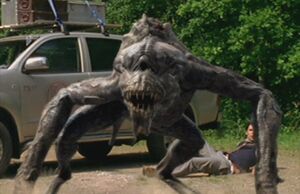 |
| You don't want to mess with a Future Predator! |
HOLD ON! HOLD ON! HOLD ON! Before I get nasty complaints from
fellow (Young-earth) creationists about a modern bat “evolving” into a creature
similar to a Future Predator-like animal, let me do some explaining. I (and
this website) for one, do not endorse the theory of evolution in anyway.
Instead, I believe that the world originated just as the Bible says in Genesis
chapter one. I do not believe that the everything originated from some bacteria
or what have you and that it evolved over millions of years into insects,
birds, mammals, plants and humans. Instead, I believe that God created
everything in six, 24-hour days around 6,000 years ago (with no gap between
Genesis 1:1 and Genesis 1:3). So could a Future Predator really “evolve” from a
modern bat? Well, I could do a whole article on this topic, but to prevent this
article from getting infinitely long, I'll be brief. First of all, if a Future
Predator-like animal did come about, it wouldn't be evolution; instead, it
would be a process of natural selection (see this article for thedifference between evolution and natural selection). Now, the Future
Predator in Primeval has no wings and lives on the ground (though it is
a terrific climber due to its ape-like body design). Does this sound a bit of a
stretch for a bat? I'd say not, because believe it or not, there is a species
of bat found in New Zealand today that, while it can fly, it hunts on the
ground. Say one of these bats had the genes for a larger body which God already
“programmed” in its DNA. That would mean that, if the environment around the
bat favored large size, it could grow larger. This rule could be applied to
loosing most of its fur, changing the body shape a little bit and greatly
reducing the wing membranes and etc. Now you have a Future Predator, but no
evolution is required. If this still seems a bit of a stretch to you, consider
the variation we see in dogs! We have short dogs, tall dogs, long dogs,
long-nosed dogs, short-nosed dogs, short-legged dogs, long-legged dogs, hairy
dogs, shinny, dogs, fat dogs and etc, but they're all in the created dog kind!
There you have it, I've just explained all that in less than 380 words. If
you're still confused, please email me at the address you can find in my PS's
near the bottom of the article.
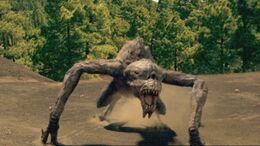 |
| Future Predators can be almost silent when stalking their prey. |
Thanks for reading today's (lengthy) article. This article is
wrapping up the third part of my review for Primeval season 1. If you've
enjoyed it, please let me know in your comments. If you still haven't gotten
enough of Primeval, that's OK! Because I'm planning a review on season 2
as well, but that's later. Please come back next week to read Joy Hammond's
latest article. Until next time, see you around!
PS 1: To post a comment (this is highly encouraged), please
simply click the post you wish to comment on, scroll to the bottom of the page
and put what you wish to say or ask in the comment box. Then in the box below
the comment box choose who you’re going to comment as. And then click preview or publish. If you aren’t signed into Google, you’ll be asked to type
in a word and a number in the space provided. Type the word, put a space and
then put the number. Then your comment is on the blog!
PS 2: Have a puzzling question about animals (including
dinosaurs), myself, my latest book, my stop-motion movies, Creation or etc?
Please post your question as a comment or send me an email at animaladventures@aol.com.
PS 3: What’s the latest scoop? Check it out at SMILEY’S NEWS.
PS 4: Be sure to comment on the latest stop-motion movies
too, this will help me improve them.
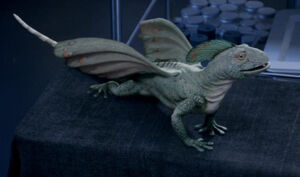
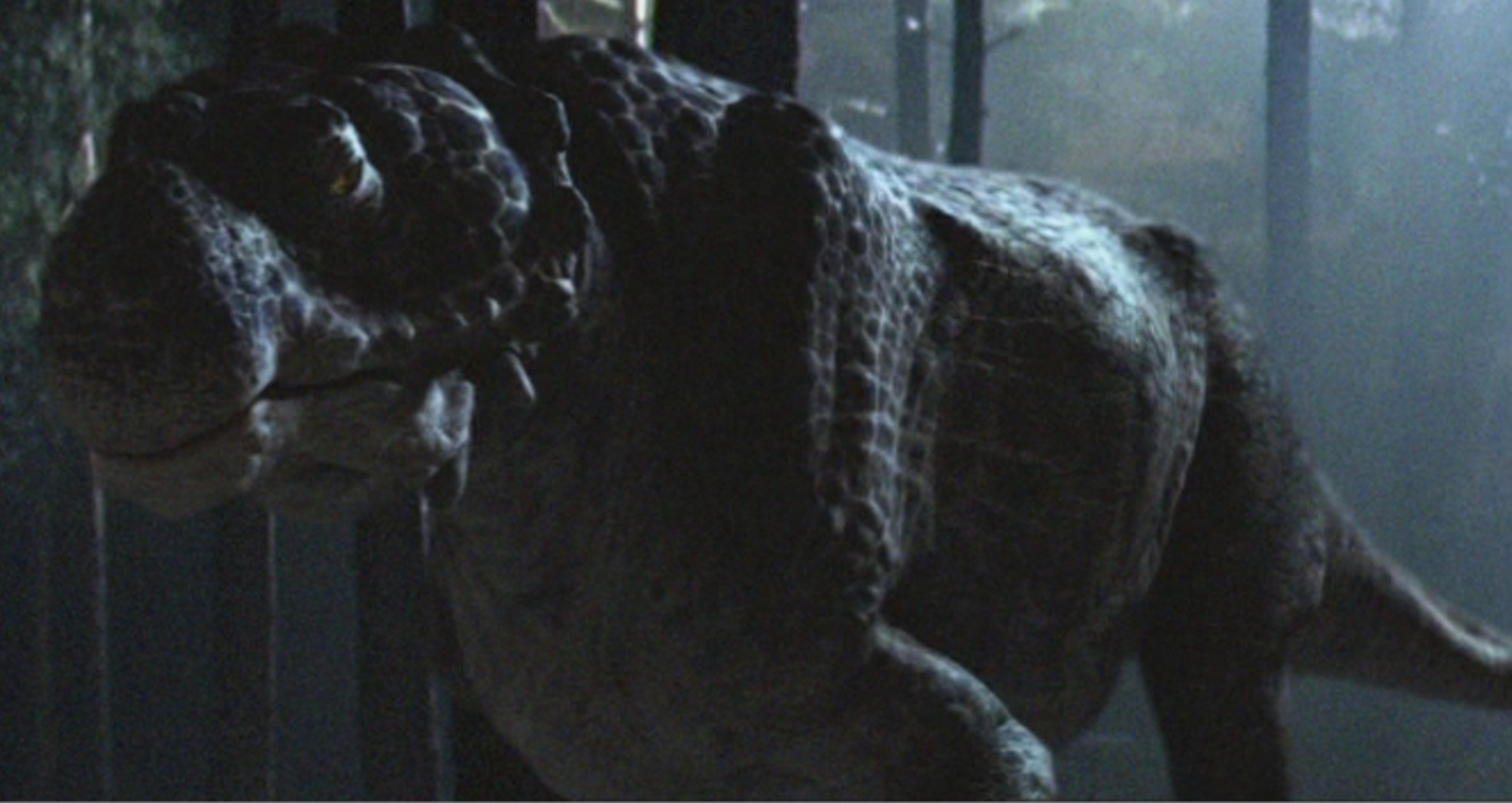
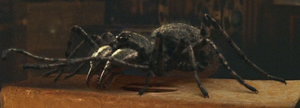


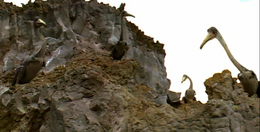

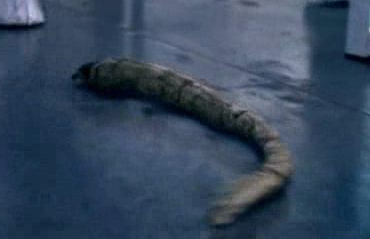
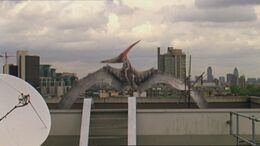
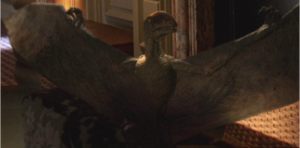

No comments:
Post a Comment